Abstract
Graduates of four rural and four urban family practice programs were interviewed to determine the nature of their practices and the factors that had influenced their practice location decisions. All programs gave residents substantial experience providing continuity of care for underserved populations. Of the 158 physicians surveyed, 58 (46%) were working in areas designated as underserved. The percentage of physicians in underserved areas was higher than that reported in other studies and was much higher than would be expected if practice sites were selected on the basis of population distribution alone. Notable differences in personal and practice characteristics were found between the physicians who chose to work in underserved areas and those who did not and between those who established practices in rural and in urban underserved areas.
Full text
PDF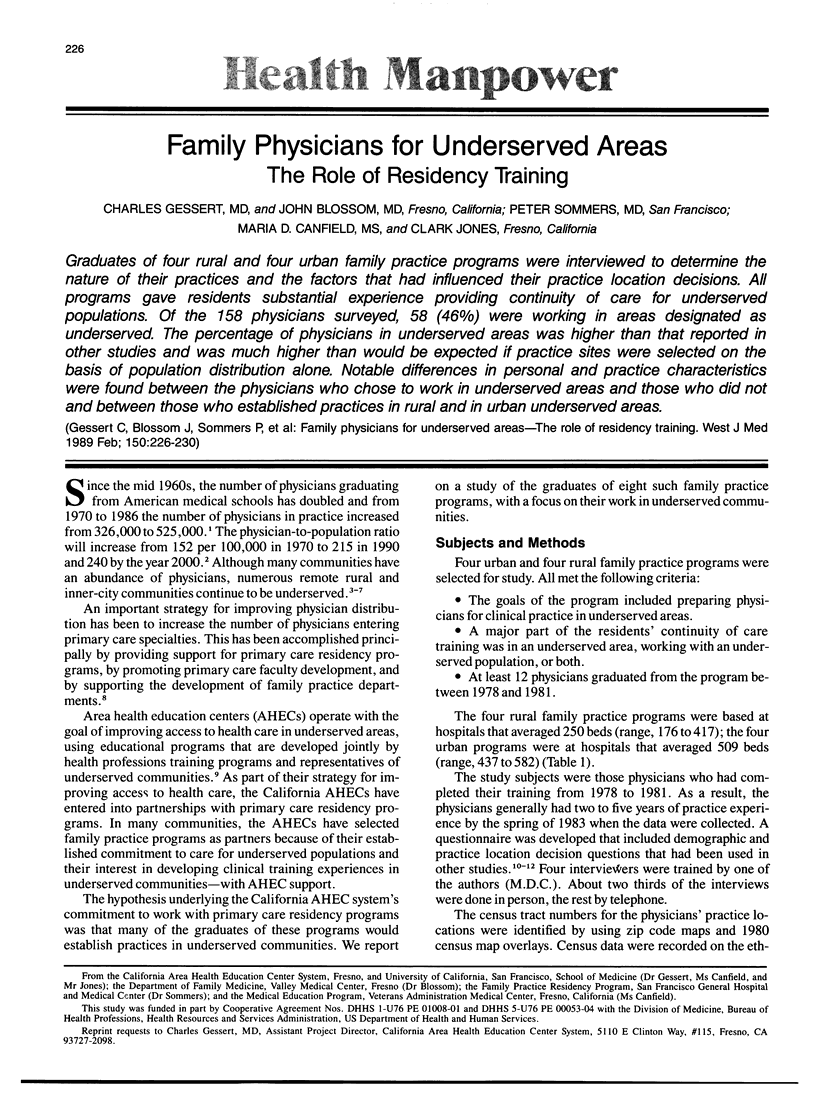
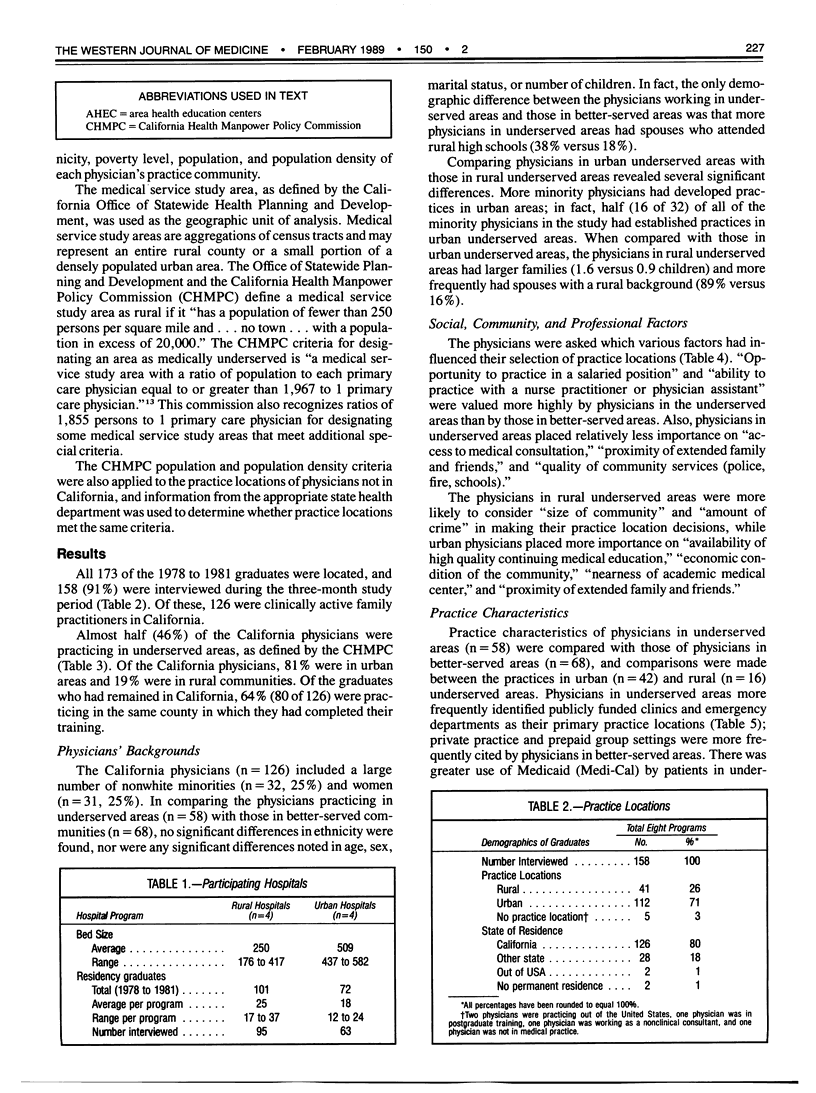
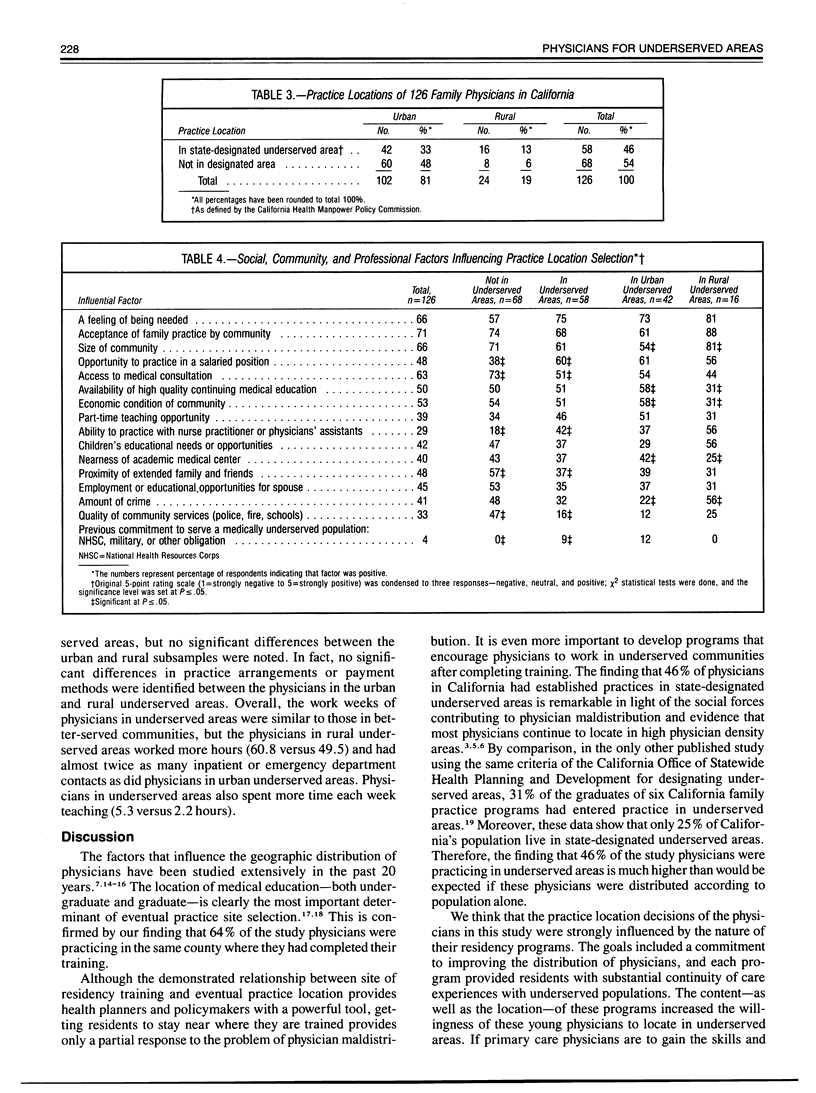
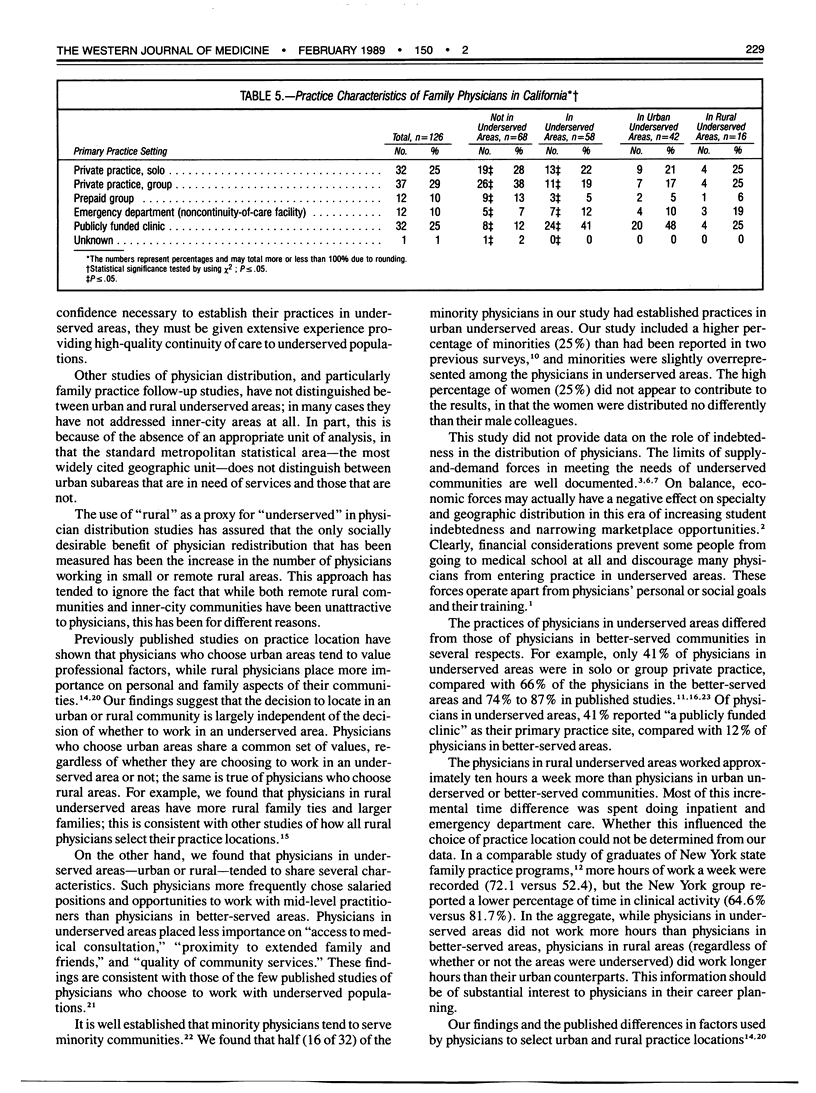
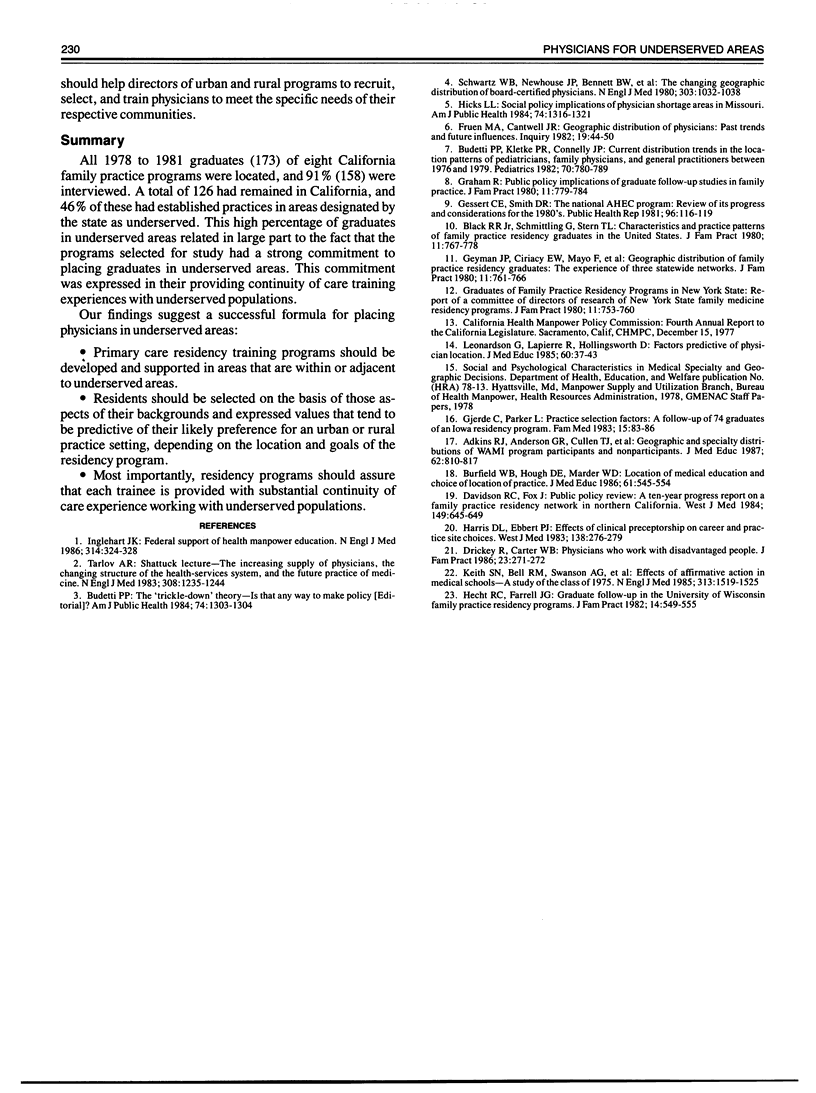
Selected References
These references are in PubMed. This may not be the complete list of references from this article.
- Adkins R. J., Anderson G. R., Cullen T. J., Myers W. W., Newman F. S., Schwarz M. R. Geographic and specialty distributions of WAMI Program participants and nonparticipants. J Med Educ. 1987 Oct;62(10):810–817. doi: 10.1097/00001888-198710000-00004. [DOI] [PubMed] [Google Scholar]
- Black R. R., 2nd, Schmittling G., Stern T. L. Characteristics and practice patterns of family practice residency graduates in the United States. J Fam Pract. 1980 Nov;11(5):767–778. [PubMed] [Google Scholar]
- Budetti P. P., Kletke P. R., Connelly J. P. Current distribution and trends in the location pattern of pediatricians, family physicians, and general practitioners between 1976 and 1979. Pediatrics. 1982 Nov;70(5):780–789. [PubMed] [Google Scholar]
- Budetti P. P. The 'trickle-down' theory--is that any way to make policy? Am J Public Health. 1984 Dec;74(12):1303–1304. doi: 10.2105/ajph.74.12.1303. [DOI] [PMC free article] [PubMed] [Google Scholar]
- Burfield W. B., Hough D. E., Marder W. D. Location of medical education and choice of location of practice. J Med Educ. 1986 Jul;61(7):545–554. doi: 10.1097/00001888-198607000-00001. [DOI] [PubMed] [Google Scholar]
- Davidson R. C., Fox J. Public policy review. A ten-year progress report on a family practice residency network in northern California. West J Med. 1984 Apr;140(4):645–649. [PMC free article] [PubMed] [Google Scholar]
- Drickey R., Carter W. B. Physicians who work with disadvantaged people. J Fam Pract. 1986 Sep;23(3):271–272. [PubMed] [Google Scholar]
- Fruen M. A., Cantwell J. R. Geographic distribution of physicians: past trends and future influences. Inquiry. 1982 Spring;19(1):44–50. [PubMed] [Google Scholar]
- Gessert C. E., Smith D. R. The national AHEC program: review of its progress and considerations for the 1980s. Public Health Rep. 1981 Mar-Apr;96(2):116–120. [PMC free article] [PubMed] [Google Scholar]
- Geyman J. P., Ciriacy E. W., Mayo F., Wood M., Cherkin D. C. Geographic distribution of family practice residency graduates: the experience of three statewide networks. J Fam Pract. 1980 Nov;11(5):761–766. [PubMed] [Google Scholar]
- Graham R. Public policy implications of graduate follow-up studies in family practice. J Fam Pract. 1980 Nov;11(5):779–784. [PubMed] [Google Scholar]
- Harris D. L., Ebbert P. J. Effects of clinical preceptorship on career and practice site choices. West J Med. 1983 Feb;138(2):276–279. [PMC free article] [PubMed] [Google Scholar]
- Hecht R. C., Farrell J. G. Graduate follow-up in the University of Wisconsin family practice residency programs. J Fam Pract. 1982 Mar;14(3):549–555. [PubMed] [Google Scholar]
- Hicks L. L. Social policy implications of physician shortage areas in Missouri. Am J Public Health. 1984 Dec;74(12):1316–1321. doi: 10.2105/ajph.74.12.1316. [DOI] [PMC free article] [PubMed] [Google Scholar]
- Iglehart J. K. Federal support of health manpower education. N Engl J Med. 1986 Jan 30;314(5):324–328. doi: 10.1056/nejm198601303140529. [DOI] [PubMed] [Google Scholar]
- Keith S. N., Bell R. M., Swanson A. G., Williams A. P. Effects of affirmative action in medical schools. A study of the class of 1975. N Engl J Med. 1985 Dec 12;313(24):1519–1525. doi: 10.1056/NEJM198512123132406. [DOI] [PubMed] [Google Scholar]
- Leonardson G., Lapierre R., Hollingsworth D. Factors predictive of physician location. J Med Educ. 1985 Jan;60(1):37–43. doi: 10.1097/00001888-198501000-00006. [DOI] [PubMed] [Google Scholar]
- Schwartz W. B., Newhouse J. P., Bennett B. W., Williams A. P. The changing geographic distribution of board-certified physicians. N Engl J Med. 1980 Oct 30;303(18):1032–1038. doi: 10.1056/NEJM198010303031803. [DOI] [PubMed] [Google Scholar]
- Tarlov A. R. Shattuck lecture--the increasing supply of physicians, the changing structure of the health-services system, and the future practice of medicine. N Engl J Med. 1983 May 19;308(20):1235–1244. doi: 10.1056/NEJM198305193082028. [DOI] [PubMed] [Google Scholar]


